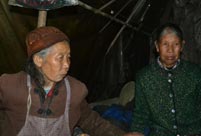

KATHMANDU, May 2 -- The 7.9-magnitude earthquake which has already claimed more than 7,000 lives last week in Nepal has also destroyed abundant of magnificent historic sites in the country, including temples and ancient towers.
Analysts said international help is absolutely necessary to restore those destructed historic sites and new technology may prevent such tragedy happen again.
PROFESSIONAL HELP FROM CHINA VITAL ON RESTORATION
During an interview with Xinhua in front of the Kathmandu Durbar Square, local archaeologist Bishnu Raj Karki said professional international helps are vital to repair those ill- fated cultural relics.
Countries especially like China could provide many assistances to us because we have very similar architecture for the monuments, like using wood, bricks and timbers, said Raj Karki.
"But we currently need two kinds of helps, one is machines that can determine the strength of timber and bricks so we know if they are reliable or not. The other one is professional training of archaeological restoration for our technicians," said the expert, adding China, Japan and India have many experiences on this issue.
Saraswati Singh, head of the Hanuman Dhoka Durbar Museum Development Committee, agreed that those are exactly the assistances what Nepal currently wants and her team is working with the Nepal military to collect the destroyed parts for further preservation.
NEW TECHNOLOGY AND MATERIAL COULD PREVENT FURTHER TRAGEDY
According to the observation of Xinhua reporters in Kathmandu since the earthquake, most of the collapsed buildings are gathered in the old city and were made of traditional materials, like mud, timber and bricks.
Dr. Shaphalya Amatya, executive director of the Heritage Nepal and a famous archaeologist, stressed that lessons must be remembered during the latest disaster and the 1934 earthquake, which also led to the demise of ancient sites here.
According to him, earthquake is very frequent here and the destroyed monuments were made of those traditional construction materials, which are not strong enough.
"Traditional technology is very difficult to preserve the collapsed historical buildings for long time, that's why we need to find new technology and new suitable materials, like cement and concrete," the expert with 30-year experience on archaeology told Xinhua.
"The science is developing very fast and why we don't give it a try? Especially most of the traditional materials in the Kathmandu Valley have been consumed in the past years for house building, for example the yellow mud is very rare now," he added.
However, the doctor said the reconstruction should not start hastily because experts from around the world need to do serious research on which new materials are right and then determine what the following steps are.
Some historians have expressed concerns that using new materials may totally change the ancient sites, but Amatya dismissed the conclusion, saying "the architecture is the same and we are not changing the architecture and the nature of the monuments."
"From outside, it will look like the same, the change will only come from inside. For example, our monuments are very heavy, we should reduce the weight from inside. After the 1934 earthquake, we rebuilt it hastily, with whatever materials we could find, that 's not a good way. So now we should not do it again," he stressed.
DEBRIS MUST BE COLLECTED AND KEPT SEPARATELY FOR FUTURE RESTORATIONS
At the nearly destructed Kathmandu Durbar Square, hundreds of Nepalese soldiers were seen to be deployed for maintain social order and collecting valuable objects from the debris, a clear move to prevent losing them either by bad weather or other factors.
Amatya said the authority should protect the sites and that 's very important.
"Because in the debris there are many expensive artifacts, which must be rescued and kept separately in different places, there are so many different monuments, we should photograph it, with names on the objects identifying which temple they came from, " he told Xinhua.
"We should not dump them in one place, or they would mix and it would be very difficult to identify in the future," said the expert.
Analysts have warned to prevent the monuments to be rebuilt by imagination, which was agreed by Amatya.
According to him, the damage is not irreversible, "after the1934 earthquake, we rebuilt them and those monuments were standing here in Kathmandu Valley until one week ago."
"But we need documentation, photographs and measurements, only with these you can rebuild them but not by imagination, or how will you do it?" he said.
You should respect the history and the architecture, he added.
 J-11 fighters in air exercise
J-11 fighters in air exercise Beauties dancing on the rings
Beauties dancing on the rings Attendants-to-be join Mr. & Miss Campus Contest
Attendants-to-be join Mr. & Miss Campus Contest Beijing's toughest anti-smoking law takes effect
Beijing's toughest anti-smoking law takes effect Family lives in cave for about 50 years in SW China
Family lives in cave for about 50 years in SW China PLA soldiers operating vehicle-mounted guns in drill
PLA soldiers operating vehicle-mounted guns in drill Blind carpenter in E China's Jiangxi
Blind carpenter in E China's Jiangxi China hosts overseas disaster relief exercise for the first time
China hosts overseas disaster relief exercise for the first time 20 pairs of twins who will become flight attendants in Sichuan
20 pairs of twins who will become flight attendants in Sichuan Obama is sowing discontent in S.China Sea
Obama is sowing discontent in S.China Sea Rescuers work through night to reach cruise ship survivors
Rescuers work through night to reach cruise ship survivors Driving through limbo
Driving through limbo Facing down MERS
Facing down MERSDay|Week